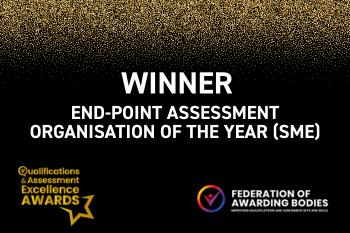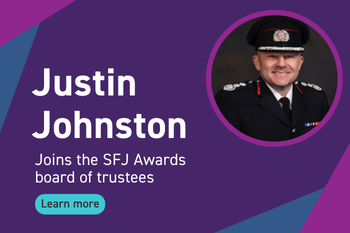All qualifications on Ofqual’s Register of Regulated Qualifications include a level in their title, to comply with Ofqual’s General Conditions of Recognition which Awarding Organisations (AOs) have to adhere to.
The levels available are:
- Entry level (entry 1 to entry 3, with entry 1 being the lowest level)
- Levels 1 – 8
At each level there are different types of qualifications, a list of which is available on Ofqual’s website.
So, what do the levels mean and how do we decide what level a qualification will be?
Ofqual have published level descriptors which AOs use to benchmark the level of qualifications. Simply summarised, the higher the level, the more difficult the qualification is.
When assigning a level to a qualification, or component (e.g. unit), SFJ Awards uses the level descriptors which provides the best match with the intended knowledge and skills outcomes. We also consult with relevant stakeholders to ensure that levels are reflective of the occupational and technical requirements.
The command verbs used in the assessment criteria are very important as they help to identify and assign the levels. Command verbs indicate the depth of knowledge and/or understanding, and the level of skill required to demonstrate competence against the assessment criteria. For example, a level 1 qualification that requires the learner to have basic factual knowledge of a subject may use the verbs recognise, outline, or identify in their assessment criteria. In contrast, a level 7 qualification may require the learner to be able to form evidence-based solutions to problems and as such assessment criteria would be likely to use verbs such as evaluate, analyse, design, develop, formulate. This table gives examples of some of the common command verbs in SFJ Awards qualifications and their meaning.
Qualification and component levels are based on a holistic overview of the learning outcomes and assessment criteria. This means that there may be outcomes, criteria, or units which are levelled above, or below the overarching level of the qualification or component, however when considered holistically they result in the overarching level.
SFJ Awards, other AOs and Higher Education Institutions also utilise other qualification frameworks to assign levels to qualifications. For example, The Scottish Credit and Qualifications Framework has 12 levels (level 1-12) and the Framework for Higher Education Qualifications in England, Wales and Northern Ireland has 5 levels (level 4-8). These different frameworks can be confusing for learners and professionals alike. The key to reducing this confusion is to understand that each of these frameworks has been aligned to allow clear comparison between qualifications of different types. The table below gives an example of how framework levels compare.
| England (Ofqual RQF), Wales (QiW) and Northern Ireland (CCEA) | The Scottish Credit and Qualifications Framework | Framework for Higher Education Qualifications in England, Wales and Northern Ireland | European Qualifications Framework (EQF) |
| Level 8 | Level 12 | Level 8 (Doctoral Degrees) | Level 8 |
| Level 7 | Level 11 | Level 7 (Master’s Degrees, Post-Graduate Diplomas and Certificates) | Level 7 |
| Level 6 | Level 9/10 | Level 6 (Bachelor’s Degrees, Graduate Diplomas and Certificates) | Level 6 |
| Level 5 | Level 8/9 | Level 5 (Foundation Degrees, Diplomas of HE, HNDs) | Level 5 |
| Level 4 | Level 7 | Level 4 (HNCs, Certificates of HE) | Level 5 |
For example, an SFJ Awards Level 7 qualification would have comparable characteristics to a Level 11 SCQF qualification and a Level 7 HE Certificate. Learning outcomes and assessment criteria would demand a similar level of knowledge and/or skills to a HE syllabus at this level. Assessment methods may be varied (e.g. an SFJ Awards qualification may require observation of a learner in their workplace and the development of an evidence-based portfolio; whereas a HE certificate may require the development of a research report, or dissertation) but the difficulty levels will be comparable.
Other elements of a qualification can also cause confusion, especially when considering comparability across frameworks and qualification types (e.g. qualification size, total qualification time, guided learning hours, credits, content, assessment methods).





